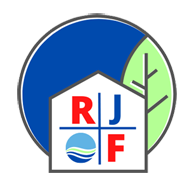We have personally seen the damage and devastation this magnitude of a storm leaves behind. We want to offer some helpful information on what to do after the storm & flood waters have passed, no matter where you live.
IF YOUR HOME HAS SUFFERED FLOOD DAMAGE, HERE ARE SOME HELPFUL GUIDELINES:
Check for damage. Check for structural damage before re-entering your home. Contact the appropriate professionals immediately if you suspect damage to water, gas, electric and/or sewer lines.
Check with authorities to see if there is a boil water order in effect and for how long. This is for your families safety and we highly recommend following these orders if you run out of bottled water.
Call your insurance agent who handles your flood insurance and file a claim. Very important.. just report FLOOD DAMAGE. Have the following information with you when you place your call: (1) the name of your insurance company (your agent may write policies for more than one company); (2) your policy number; and (3) a telephone number/e-mail address where you can be reached.
Take photos of any water in the house and damaged personal property.
If necessary, place these items outside the home. Do Not Throw Any Damaged items away! Your adjuster will need evidence of the damage and damaged items (e.g., cut swatches from carpeting, removed wall boards, baseboards, etc) to prepare your repair estimate.
Make a list of damaged or lost items and include their age and value where possible. If possible, supply receipts for those lost items to the adjuster. Officials may require disposal of damaged items, this is why it is important to at least keep a swatch or other sample of the items for the adjuster.
CLEAN UP
Prevent mold by removing wet contents immediately. Wet carpeting, furniture, bedding and any other items holding moisture or water inside the building can develop mold within 24 to 48 hours. If your home has been vacant or still wet after 48 hours, it’s time to call a Mold Investigation & Testing Company. Items need to be completely dried and monitored for several days for any fungal growth and odors. If any mold develops on walls, cabinets, window sills make sure to call a professional so you do not release mold spores into the air. If there is a funky musty smell in the air, it is time for an air quality test to make sure your air does not contain an overabundance of mold spores.
Thoroughly dry out the building’s interior. Portable dehumidifiers, professional air blowers and air scrubbers are useful and usually covered under your flood policy. An air conditioner can also be used to start the drying-out process and to make sure the humidity levels in your home are not to high.
Check your furnace for damage. Your water heater may work, but if the floodwater covered part or the entire tank, the insulation between the walls may be damaged. You may need to obtain an estimate to replace the damaged furnace and water heater.
If you have any questions on what to do or what you found, please feel free to call us, RJF Environmental Consulting Services Inc. for a free phone consultation ~ We are here to help (561) 674-4370

